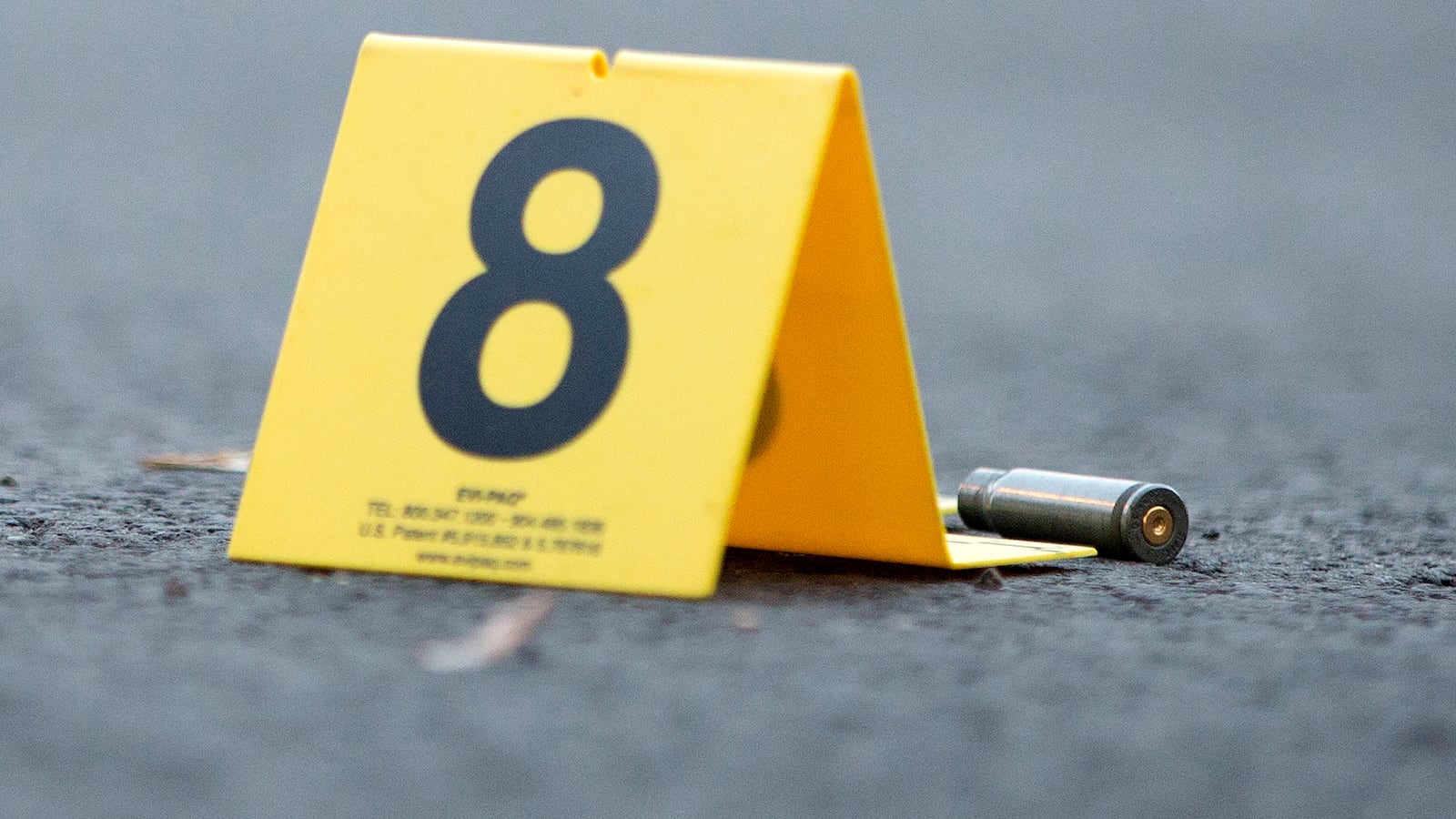Ask a room full of eighth-graders what they like about their Chicago neighborhood and you’ll get a wide-ranging cascade of answers: the close bonds they feel with neighbors, the cumbia rhythms blasting from apartment windows, the summer festivals, the programs at Holy Cross Church, the street vendors, the tacos at Internacional. But if you ask what they don’t like about Back of the Yards, situated on the city’s southwest side, a single topic will echo time and again: the shootings.

Gun violence has long been a reality in the neighborhood. The frequency of it tends to ebb and flow, but it never seems to be far from the minds of young people growing up there. A couple of weeks before school started one year, a rising eighth-grader, Leo, had been shot at close range not far from his family’s apartment. Thankfully, he survived, but it was a reminder to all the kids who knew him — and his teachers, too — of how random and sudden such incidents can be. A few weeks into the year, a student scrawled the words “If only we were bulletproof” onto a whiteboard in large, red letters.
It wasn’t just in Back of the Yards. Gun violence in a number of Chicago neighborhoods, along with the city’s escalating murder rate, had garnered national attention. In an interview on CBS Evening News earlier that year, Mayor Rahm Emanuel put the blame squarely on “gangbangers” and their supposed lack of values. “Who raised you?” Emanuel asked, as if speaking to a hypothetical gang member. “How were you raised?”
It was a simplistic and bigoted analysis: a slap in the face to parents in gang-plagued areas that completely ignored the root causes of the violence. But what bothered my students even more was the way the deaths of young people in their community were routinely shrugged off by the mainstream media. When a 20-year-old was shot to death that December, online news coverage consisted only of a couple of sentences of bare facts: his name, age, the block where he was killed, and the time of death. Students, several of whom knew the victim, wondered out loud why all lives didn’t have the same value.
Exploring gun violence in my media class had the potential to trigger old pain and reopen emotional wounds, and I wasn’t sure I’d built up enough trust with the students to navigate that — having just returned to Chicago Public Schools after years of teaching college. Besides, the problem and its causes sometimes seemed so vast, so complex, I worried that spending time studying them might just leave us all feeling more overwhelmed and helpless. Wouldn’t it be better to close tight the door of the classroom and try to forget about the fear of shootings for seven hours each day?
It was tempting. But ultimately, I decided that doing so would be like teaching about the solar system while a spreading wildfire raged nearby. Gun violence was important for us to explore in this course because it was personal because it literally hit close to home. I believed my eighth-graders could benefit not only from looking at the issue and its underlying causes more methodically but also from the opportunity to share their stories and express their feelings about it.
Over the next three weeks, we immersed ourselves in the issue from a multitude of perspectives. A guest speaker helped students identify the root causes of gangs and gang-related violence. An online article gave added insight into how guns get from suburban shops to Chicago’s streets. Undercover videos showed how loopholes in gun laws made it easy to obtain a weapon without an ID check. A Chicago Tribune website that tracked crime statistics by community allowed students to see connections between violent crime and other factors: per capita income, education level, and overcrowded housing. First-person narratives and song lyrics surfaced the emotional trauma that often accompanies gun violence.
For the unit’s final project, I wanted to give kids choice in how to express what they’d learned, so I laid out a menu of possible options: videos, written essays, poetry, interviews, and comics. Daniel’s essay, for example, looked at four potential contributing causes to community violence — segregation, economic inequality, miseducation, and the availability of guns — and proposed strategies to address them. But many of the others — especially those who chose to do poems or comics — were more narrative and personal.
One of the most moving pieces was “How We See Violence,” created by Leo, the student who had been shot a couple of weeks before the school year began, and Rudy, a friend who had been with him at the time. Both had, at times, been reluctant or unfocused participants in other projects we’d done in media class, but this one garnered their full effort and attention. They interviewed each other, as well as two other eighth-grade boys, and edited together clips with a bare piano soundtrack underneath their voices.
“I lost my friend,” Rudy says in the video. “He was 16. He got shot twice — one through the chest, one through the heart. I seen him on the floor, and when the cops were putting him in the body bag, they flipped him over, all bogus.” He pauses, never once looking straight into the camera. “I felt bad because I grew up with him. I knew him since I was 3 years old. And … it just felt bad. I never thought it would be my last goodbye, like that.” Leo, too, remembers the violent death of someone close to him—an older cousin who he says he considered a role model. “I still feel like I’m lost,” he says. In the second half of the piece, they recount the day Leo got shot. Leo says that as his leg went numb, all he could think about was his strained relationship with his father and that he might never have a chance to repair it.
They ignored the causes of violence, which was one of the central themes of our study, to focus solely on their own experiences and how they felt about them. In that sense, it was less an assessment of their learning than an elegy to lost loved ones and, perhaps, to lost innocence. Some might consider that a squandering of valuable learning time or say that school is not the place for such raw reflections on fear and loss and regret. But if not in the classroom, where? Where do young people go to process or share such pain and trauma?
If schools really care about the social and emotional well-being of our students, our efforts to address them can’t be limited to counseling sessions or after-school groups — as useful as those can be. It needs to happen in classrooms, too. And it begins with creating spaces for students to be seen and heard — even when it is painful, even when it is a departure from the district curriculum, even when it can’t be easily scored or measured.
Gregory Michie teaches seventh- and eighth-graders in Chicago’s Back of the Yards neighborhood. A former college professor, he is the author of several books. This piece is adapted from his new book, “Same As It Never Was: Notes on a Teacher’s Return to the Classroom.” Copyright 2019. Published by Teachers College Press and reprinted here with permission.
About our First Person series:
First Person is where Chalkbeat features personal essays by educators, students, parents, and others trying to improve public education. Read our submission guidelines here.


